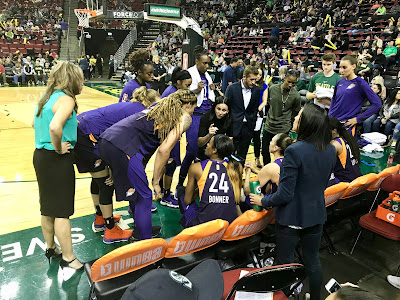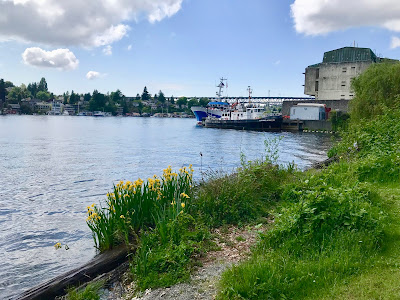 This is a new take on the Mushroom and Crab Casserole that Marg, my good friend in Powell River, makes.
This is a new take on the Mushroom and Crab Casserole that Marg, my good friend in Powell River, makes.Wayne and I are working on getting healthier and trying to lose some weight. This recipe replaces some of the pasta with a very versatile vegetable, spaghetti squash.
SEAFOOD SPAGHETTI SQUASH LASAGNA
Ingredients:
 |
| Bake spaghetti squash. |
Seafood Sauce:
1 tablespoon olive oil
1 small onion chopped
1/2 red sweet pepper chopped
1/2 bell pepper diced
2 stalks celery with leaves diced
2 cups white mushrooms sliced
3 cloves garlic minced
1/2 teaspoon chicken bullion crystals
1/2 teaspoon salt
 |
| Shred the squash. |
sprinkle of cayenne pepper
sprinkle of ground pepper
sprinkle of nutmeg
1/4 teaspoon dill
2 tablespoons white wine
2 tablespoons all-purpose flour
2 cups milk
2 tablespoons spreadable cream cheese
2 cups imitation crab (or the real deal)
2 cups medium shrimp whole
 |
| Mix the filling. |
1 cup ricotta cheese
1/2 cup Parmesan cheese
1 teaspoon dried basil
1/4 teaspoon garlic powder
Pasta:
4 lasagna noodles
2 quarts boiling water
1 tablespoon oil (optional)
1 teaspoons salt
 |
| Saute the sauce ingredients. |
1/2 cup mozzarella cheese grated
1/2 cup shredded Parmesan cheese
Directions:
Cut spaghetti squash in half lengthwise and remove the seeds. Place upside down in 1/2 inch of water is a large baking dish. Bake at 375 degrees for about 45 minutes or until the flesh is fork tender. Remove and cool. Shred the squash until it looks like spaghetti (hence the name).
 |
| Cook the noodles. |
Add wine. Simmer about 1 minute more until liquid is almost evaporated. Measure flour into small bowl. Gradually whisk in milk until smooth. Add to vegetable mixture, stirring constantly until boiling and thickened.
Stir in cream cheese until melted.
 |
| Add seafood to the sauce. |
Prepare a baking dish with cooking spray. Put enough of the sauce mixture to cover the bottom of the dish. Lay the lasagna noodles on top, overlapping the edges.
Add shrimp and crab to the remaining sauce mixture. Put about one third on top of the lasagna noodles. Mix ricotta and Parmesan cheese with garlic powder and basil.
 |
| Layer the ingredients. |
Put a small portion of the seafood sauce on top of the squash and mix it in to moisten and flavour it.
Top with the remaining seafood sauce. Cover and bake at 350 degree oven for 30 minutes until hot and bubbling. Add the mozzarella and Parmesan cheese on top and return to the oven uncovered.
 |
| Bake until golden brown. |
Okay, I know the seafood sauce and cheese aren't low calorie, but at least the spaghetti squash allows us to eat a normal portion with a little less guilt.
Have you altered any recipes to make them healthier? I'd love to hear about them. -- Margy








